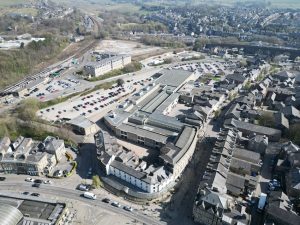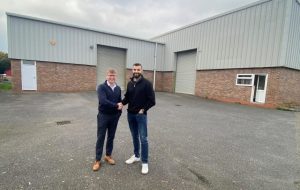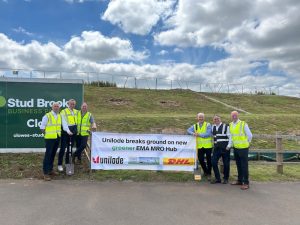Derby firm brings historic goodsyard back to life

A Derby firm has played a key role in bringing one of Europe’s largest goodsyards back to life.
QSS, based on Vernon Gate in Derby, provided risk assessment services on Bishopsgate Goodsyard – a historic site dating back to the 1840s, located in Shoreditch, East London.
In the 1880s the passenger station established itself to become one of Europe’s largest Goodsyards, however from the 1950s the site was mostly disused. A major fire in 1964 destroyed most of the upper level buildings and more recently a partial demolition to make way for the Shoreditch Overground line, Box Park and Powerleague.
In February 2016, QSS was asked to do an initial risk assessment for the site. With the site out of use, Network Rail, which owns Bishopsgate, wanted to ensure the site was safe given the number of trespassers entering and engineers needing to do work on the Liverpool Street overhead line. This initial risk assessment was completed on the 4th April 2016.
The QSS Group was then asked to put together an induction pack for the site due to safety concerns for visitors requiring access and the knowledge QSS had obtained about the site. In May 2016 squatters inhabited the site which caused major concerns relating to their safety. QSS was asked to compile a report based on the initial risk assessment, which would then enable the squatters to be evicted with immediate effect.
After reviewing the initial Risk Assessment, Network Rail realised that the risks involved were substantially higher than originally thought, as a result QSS was asked to carry out a more detailed risk analysis of the site in June 2016. Given the size of the remediation work involved, Network Rail asked QSS to handle the project management of the site to ensure a safe environment for all those requiring access and to allow the site to be used again for commercial use.
Due to the size of the site, it was split up into four zones: the upper level, the west vaults, the east vaults and the subterranean level. Therefore, site remediation was prioritised in order of risk and then by zone. Stage one was the immediate risk and site security, which began in August 2016 and was completed by October 2016. Stage two was intermediate level risk, which started in September 2016 and ended in February 2017. Stage three focused on low level risk, starting in April 2017 and being completed by July 2017. Finally, stage four focused on the subterranean level and started in July 2017, with a projected end in November 2017.
Upon completion of stage three, the east and the west vaults were available for external commercial use and this saw the first revenue earning income for the site in nine years.
QSS’s work at Bishopsgate has allowed it to be involved in a number of different events linked to the site, the first being London Fashion Week (LFW). Network Rail was approached by one of the organisers of LFW, who expressed an interest in the site for one of their shows. Due to QSS’s knowledge of the site, it was asked to work with LFW and Network Rail to help preserve the safety of the site and its occupants.
A spokesperson for QSS told TheBusinessDesk.com: “It was great to work with LFW and the site was very well received. They expressed an interest in using Bishopsgate again and are considering using The QSS Group’s services for other sites that LFW work on.
“The remediation of this site and it now generating revenue has allowed Network Rail and QSS to get involved in other new and exciting work relating to this site.”









